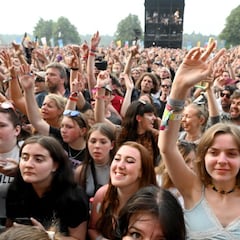What is dynamic pricing and why are Bruce Springsteen concert tickets so expensive?
A new pricing model utilised by Ticketmaster increases the price of tickets up by thousands of dollars when there is a heightened demand.


A pricing model used by online retailer Ticketmaster has left some music fans paying thousands of dollars for tickets that would previously have cost less than a tenth of that.
Last week tickets for Bruce Springsteen’s 2023 world tour went on sale, the iconic musician’s first major tour since 2016. The tickets were made available to fans on Ticketmaster but many faced a new ‘dynamic pricing’ system which adjusts the price of tickets to reflect the demand.
Some fans were asked to pay up to $5,000 per ticket in some areas, far exceeding the typical cost for that type of seat. Ticketmaster defended the pricing by saying that only 11.2% of the Springsteen tickets were sold at the ‘platinum’ level, and that the average price for tickets sold was $262.
What one billion dollars really means
#BruceSpringsteen’s fans are seeing red over the high cost of tickets for his upcoming tour and it’s all because of what #TicketMaster is calling #dynamicpricing pic.twitter.com/VsbUb2QIqz
— Morning Express with Robin Meade (@MorningExp) July 22, 2022
In a statement to The New York Times, Springsteen’s manager Jon Landau said: “In pricing tickets for this tour, we looked carefully at what our peers have been doing. We chose prices that are lower than some and on par with others.”
He added: “I believe that in today’s environment, that is a fair price to see someone universally regarded as among the very greatest artists of his generation.”
What is dynamic pricing?
Although the inflated ticket prices surprised Springsteen fans, the dynamic pricing model is fairly well-established in other areas of online retail. When booking flights or hotel rooms online the prices shown are gradually increased for repeat visitors to the site, to push them into making a purchase.
A report from Deloitte and Salesforce in 2018 found that 40% of brands that utilise artificial intelligence to personalise customer experience will also be employing adjusted pricing. Four years on the proportion of businesses taking advantage of the technology will only have increased.
More US & UK shows on sale tomorrow! All links at https://t.co/v6UWVS33h7 pic.twitter.com/H4huAO66Q4
— Bruce Springsteen (@springsteen) July 21, 2022
There are countless other examples of companies using the gargantuan amount of data compiled on each of us to tailor prices to the customer. In almost all instances, this means pushing up prices for those who are particularly desperate.
Related stories
A report from McKinsey found that Amazon “reprices millions of items as frequently as every few minutes,” manipulating the data to force some customers to pay more.
Retailers claim that the new technology simply allows artists to benefit from a high demand for their tickets, and that it offers a fairer alternative to the ticket scalping sites that otherwise purchase tickets to sell at a mark-up. However when the automated system is allowed to run unchecked there is the danger of fans being priced out.

